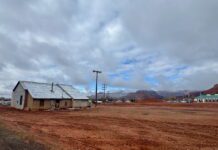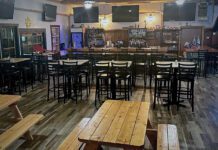
How did Intermountain Garfield Memorial Hospital stay open when its water supply was cut?
The first time a Utah hospital used an emergency water filtration system was a success
By Daron Cowley
Early July 14, flash flood waters that ran over the site of the 2017 Brian Head fire overwhelmed and contaminated the spring water collection boxes that feed into the Panguitch culinary water system. It caused the rural city of 1,800 to declare an immediate “no water use” order for culinary water. What that meant was absolutely no water use, even if boiled. What did this mean for the 14-bed Intermountain Garfield Memorial Hospital, managed by Utah’s Intermountain Healthcare system, which used the city’s culinary water?
Water is used in so many ways inside a hospital, not just for drinking or bathing. There’s food preparation, dishwashing, laundry services, hand washing, and sterilization of instruments.
The Intermountain Healthcare Emergency Preparedness team was ready. They immediately responded to the notification, putting into action the water disruption emergency response plan for the hospital. The hospital needed both bottled water and filtrated water, and not knowing how long the “no water use” order would be in place, it also needed water filtration systems.
The Southwest Utah Healthcare Preparedness Coalition was contacted for help. This coalition comprises healthcare representatives from five southwest Utah counties and includes six hospitals, three of which are Intermountain hospitals. This coalition was formed to pool knowledge, resources, and support in case of emergencies. The coalition had used federal grant funds to purchase low- and high-density water filtration systems. Neither filtration system had ever been made fully operational, but coalition members had been trained on how to use them. These filtration systems were transported to Intermountain Garfield Memorial.
By 3 p.m. July 14, the filtration systems were fully hooked up and filtering water through a four-stage process. Before the filtrated water was used, a water sample was taken by the local health department and tested to make sure the filtration system was functioning properly. The testing showed that the water was clean and safe to use, so the filtrated water was used for drinking, handwashing, bathing, and foodservice operations.
Thousands of bottles of water were sent from other Intermountain hospitals as well as food service items like disposable plates, cups, bowls, and cutlery as dishwashers couldn’t be used.
Intermountain Garfield Memorial’s chef created six-day food plans for all the inpatient, caregiver, and long-term-care residents and coordinated how foods would be prepared and managed without the use of culinary water.
Another issue to solve was laundry. Intermountain Garfield Memorial washes its laundry on site. Another rural facility, Intermountain Sevier Valley Hospital (about 100 miles away) coordinated with Intermountain Garfield Memorial to do their laundry, keeping the hospital supplied with clean linens.
By the afternoon of July 15, Panguitch City had moved from the “no water use” order to a “boil water” order. But the “boil water” order did not mean that it was yet okay to use the culinary water system at the hospital. Even though the water could be boiled for use elsewhere in the city, the hospital still only used bottled or filtered water.
The “boil water” order for Panguitch was lifted July 18. At this point, it was time to fully clean the hospital’s water system. The process was a highly systematic and thorough one. Water was fully drained out of pipes, filled with chlorinated water, allowed to sanitize for several hours, and fully flushed out of the system. Once that was done, the water was tested once again to ensure that it was clean and safe.
“I am so proud of our team and how our hospital has responded,” said Alberto Vasquez, administrator at Intermountain Garfield Memorial. “When a hospital has never experienced something like this before in our state, it’s hard to know what to expect, and there are so many elements that must be considered and handled proactively for the safety of all. And having been able to ensure the safety of all has been a testament to the above-and-beyond attitude of all involved, along with the training, foresight, and everyone working together.”
Articles related to “How did Intermountain Garfield Memorial Hospital stay open when its water supply was cut?”
POLL: What consequences should the individual responsible for the Brian Head fire face?



